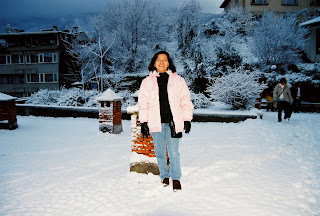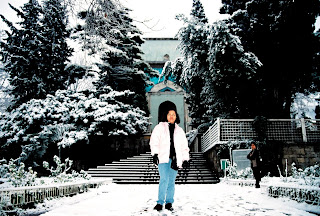
100km south of Istanbul and 30km inland away from Sea of Marmara, lies the most industrial and commercial center of Turkey, Bursa. It was an early capital of Ottoman Empire and was formerly known as Prusa, named after Bithynian King Prusias II in 202 BC . Due to its strategic location on the westernmost end of the famous silk road, it remained as one of the largest centers for silk trade throughout medieval period. From silk to textile products, knives to horse carriages production, automotive parts to motor vehicle to food industries, it is the most industrialized and cultural charged metropolitan center in the southern Marmara region. Bursa is the 4th largest city of Turkey with a population of 2.5 million


Bursa located at the lower slopes of Uluday and its 2500 meter high Lympos Mountain, is one of the best ski resort in the nation. Besides skiing, visitors also come here for its hot springs offered all year round during its 4 significant seasons.


Bursa is the 4th largest city of Turkey with a population of 2.5 million


A commercial busy street at City of Bursa. The Statue at the center of the bustling street is of the founder of the modern Turkish Republic, Mustafa Kemal Ataturk


Heavy snow fall in early winter at the city of Bursa. The city is always addressed as Green Bursa due to its gardens and parks as it is in the middle position of the fruit growing region. Bursa is not only famous for its fruit like peaches and candied chestnut, it is also very popular for Iskender Kebab which is the best dish in Turkish cuisine.


Bursa, being the first Ottoman capital of Turkey, is very rich in religious monuments, mosque, tombs and baths. Yesil Camii, known as Jewel of Bursa, is an imperial Ottoman Mosque famed for its green tiles decoration. It is a master piece of the early ottoman architecture that marked the beginning of pure Turkish Style.



The mosque was commissioned by Sultan Mehmed I in early 1420 but had been extensively renovated after 1855's earthquake. The walls of inner vestibule were covered with dark green tiles and ceiling and sides of eyvans were decorated with blue-green mosaic.


A beautiful winter scene at the surrounding area of Mosque Complex.


A theological college, library, an ablution fountain and tombs are within the mosque building complex.


The Grand Mosque is famous for its carved marble doorway, an interior fountain, and a masterpiece of wood-carving pulpit.


No comments:
Post a Comment